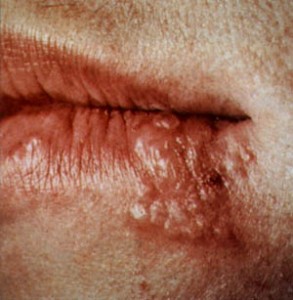After one or more teeth have been removed, you will want to do all the right things for the area to heal quickly and smoothly. This requires that a blood clot is formed. The blood clot covers the extraction site and allows the area to heal. A lot of the tips below help the blood clot to form properly and not become dislodged. Continue reading
Category Archives: Sore Treatments
How to Make Your Braces Hurt Less
Dental braces are a type of orthodontic treatment used to correct teeth that are crowded, crooked, protruding, out of alignment or have irregular spacing. By moving the teeth into the ideal position, dental braces help to create a more attractive and healthier smile for both children and adults. Continue reading
How to Evaluate Denture Occlusion
Denture occlusion is no different from natural teeth occlusion. Occlusion refers to your bite, to how well and how accurate the teeth come together and how well the top teeth fit into the bottom teeth when you bite together. If you experience pain when you bite down or chew food, your occlusion may be off and need adjustment. You evaluate denture occlusion the same way you evaluate natural teeth occlusion, with dental occlusion paper and a mouth mirror available from your dentist or a dental supply laboratory. Continue reading
Hard Vs. Soft Denture Reline
Denture fitting is so crucial to comfortable use that a slight misalignment can create many far-reaching problems in your mouth. Due to the nature of gums, dentures need adjustments from time to time to properly fit. Gums and jawbone shrink with time as part of the natural aging process. Dentures that may have fit perfectly at first can become unsuitable for chewing as they loosen and slide around. Two types of adjustments are available: hard reline and soft reline. Both types of relines can either be performed in office or by using a do-it-yourself denture reline kit. Continue reading
Flying With an Abscessed Tooth
Illness during a flight may lead to an unscheduled landing. This is expensive for the airline and extremely inconvenient for other passengers. There are relatively few situations where travel by flight is not allowed, and having a tooth abscess is one of them. Although the pain might not be so severe to the stage where the aircraft would have to do a force landing, however, different people have different level for tolerance of pain. So it is generally unwise to deliberately fly with a known tooth abscess in the mouth.
Most people are aware that the air gets thinner, providing less oxygen the higher you go. To help deal with this, commercial aircraft are pressurised to the equivalent of an altitude of 1500-2000m. This still results in a relatively small fall in oxygen saturation of the order of 3-5%, which may be significant for travellers whose oxygenation is already compromised by severe cardiac/respiratory disease. In practical terms, people with severe heart or lung disease who can walk 50m on level ground or ascend a flight of 12 domestic stairs are probably fit to fly. Continue reading
How to treat contagious cold sores & fever blisters
What are cold sores ? Are they Herpes?
Cold sores are also known as fever blisters which are caused by Herpes Simplex Virus (HSV). There are two types of HSV, Type I is associated with infections of skin and oral mucous membranes, where as type 2 virus is associated with genital infection. Normally Cold sores are caused by HSV Type I. Cold sores is a recurrent infection and there is no permanent cure , so once you are infected with herpes simplex virus, it will remain in your body with or without symptoms. Transmission of virus can still occurs from a person who is infected with herpes simplex virus but without any visible symptoms. Reactivation of virus maybe is due to various stimuli, such as ultraviolet light, menstruation, stress, immunosuppression, and etc. You can get transmitted with HSV virus through droplet spread or contact with the lesions , such as activities like kissing, or sharing utensils.
How does Sodium Lauryl Sulfate (SLS) lead to canker sores?
What are Canker sores?
Canker sores are also known as aphthous ulcer. Patients will normally face symptoms such as soreness, burning, or prickling sensation 1 to 2 days before the appearance of the ulcers.
Normal surrounding of your mouth will appear normal or there will be some red macules at the future sites of the ulcers. There are three recognisable type of aphthous ulcers , minor aphthous ulcers, major aphthous ulcers, and herpetiform ulcers. Continue reading

